South Africa 1900-02 to 1912
|
1903-12
Parade or Walking Out Dress
** Please note that for illustration
purpose only, some pictures have been coloured, this is to give
the viewer a representation. Please see the true colours of
uniform in the "ceremonial" section.
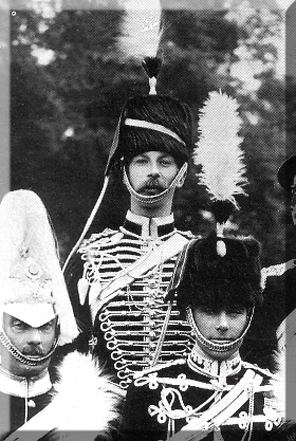
Captain
W.F. Martin 1911 (Killed in action on 13th May 1915, Frezenberg) is wearing a complete
dismounted review order (Lieutenant's Pattern Dolman, although he is
wearing three pips).
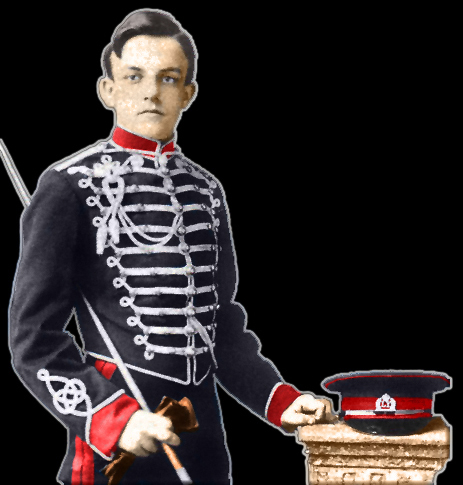
Trooper 1911 (Coronation)
Leicestershire Yeomanry trooper’s cap c1911
Found on an auction website:
"A peak cap of dark blue wool with scarlet cap band and piping.
Complete with small white metal cap badge. The inside with a
paper label W.T. Alldridge B squadron. Clean condition"
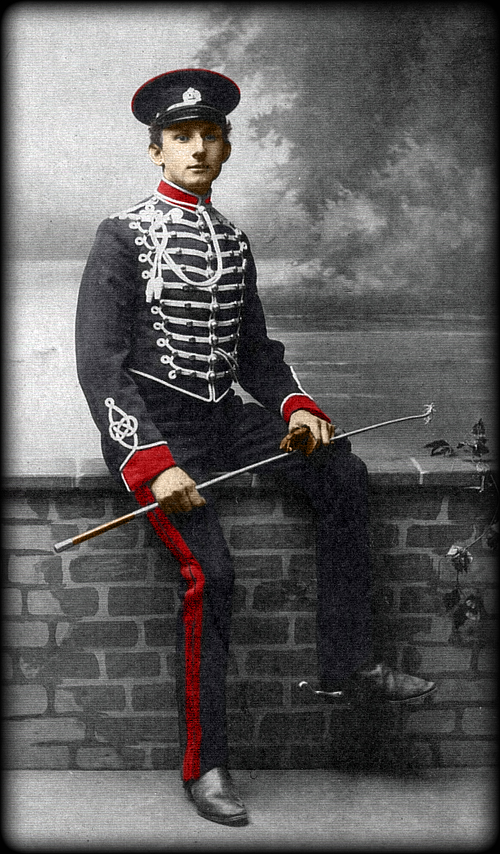
Trooper A E Baker c1910
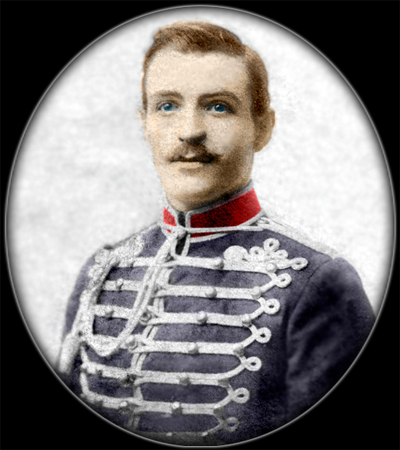
Unknown Trooper, c1910
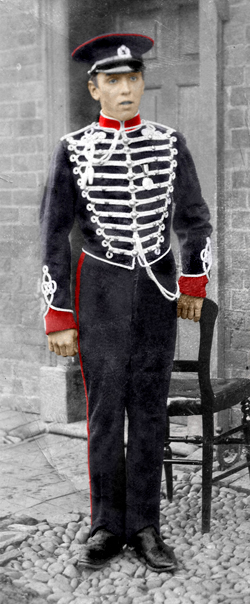

Unknown Troopers ready for Church
Parade, c1911
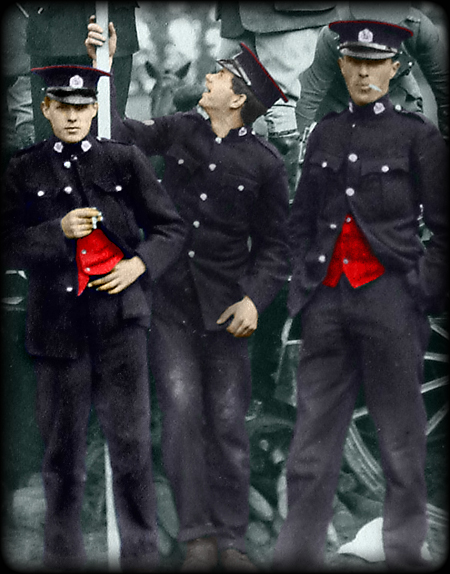
Here you can see (c1910) that the
Troopers are wearing their stable & fatigue dress underneath
their blue serge patrol jackets. Note the peaked forage cap is
plain blue, the badges are the white metal LIY type and the
buttons are the white metal LYC or LY Prince Albert's Own type.
Fatigue & Stables
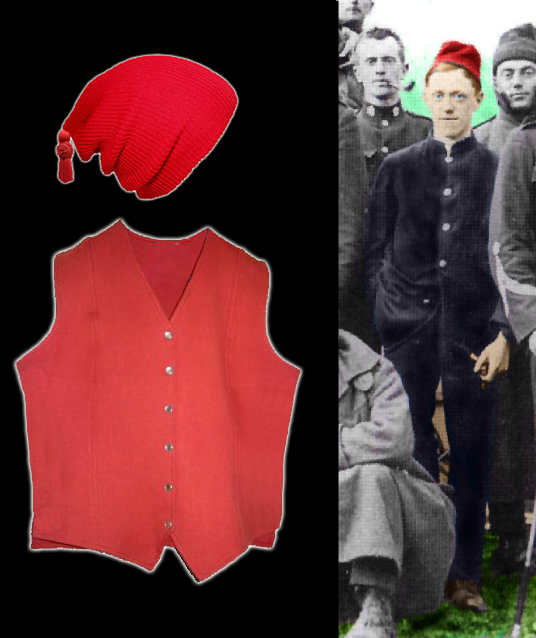
Jacket:
Rough blue serge stable suit,
with white metal regimental buttons. A red serge
waistcoat was worn underneath the jacket with a white collarless
shirt and brown leather lace up stable boots.
Headdress: Red knitted cap with a tassel.
These had been worn since the 1890's and were peculiar to the
Prince Albert's Own.
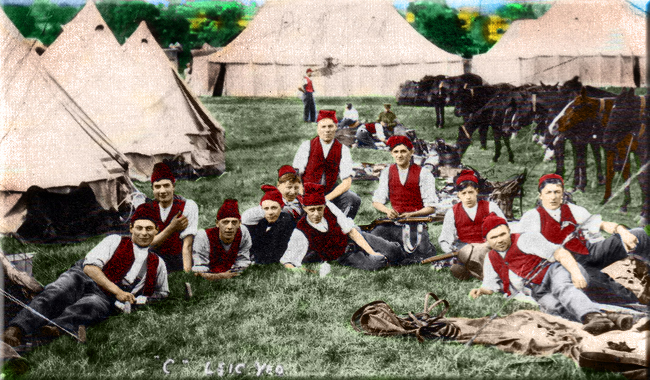
Camp c1911 (Melton Mowbray), red
knitted hats and serge waistcoats can be clearly seen.
Drill Order
Trooper and Corporal
c1910.
Drill Order c1910
Uniform: Blue Jacket, blue Peaked
cap with LIY Cap and collar badges, cord breeches (drab),
brown boots, brown leather gaiters and hunting spurs. A scarlet
red waistcoat would have been worn under the blue serge jacket.
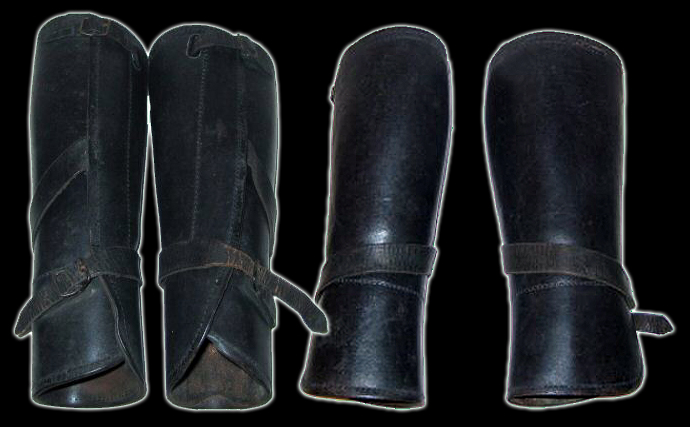
Leather gaiters.
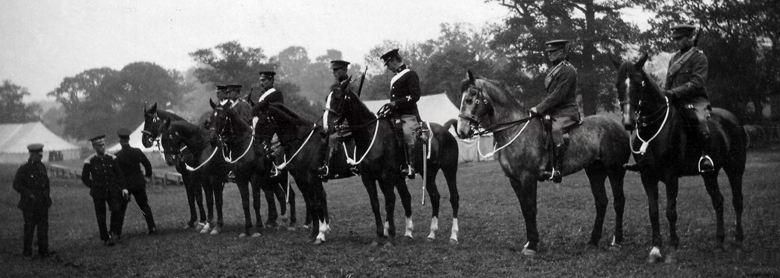
Here you can see the transition
period where the LY stop wearing the Red/Khaki uniform and
revert back to a blue serge jacket c1907.
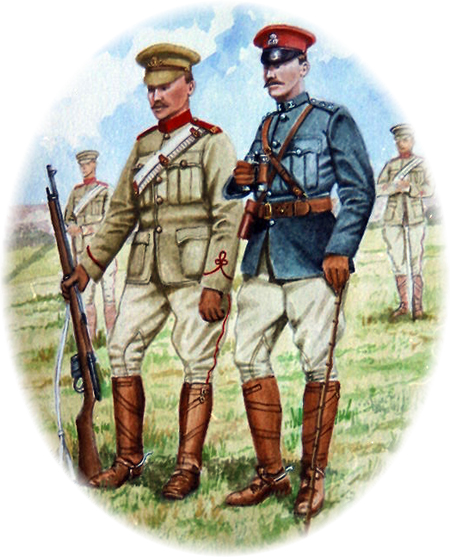
A painting showing a later change in the officer dress.
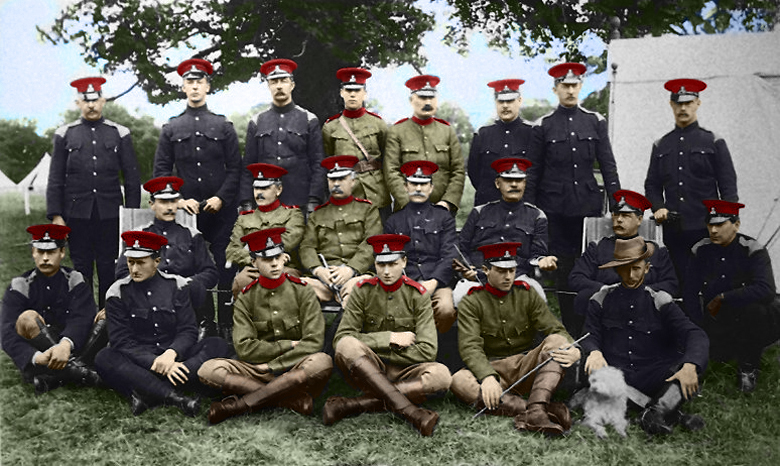
This officer group picture
was taken c1903, as you can see some of the officers wear the
Red/khaki uniform, note that the cuffs do not have the Austrian
knot that appear on the other ranks uniform. Captain. The Hon. P C Evans-Freke
wears the slouch hat from his recent service in the 2nd Boer War.
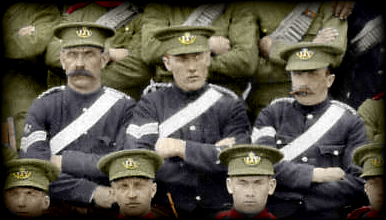
Senior NCO's have single twist
silver cord shoulder cords and wear the white buff crossbelt.
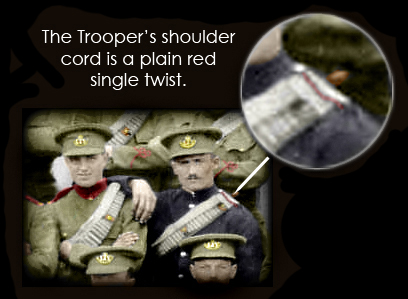
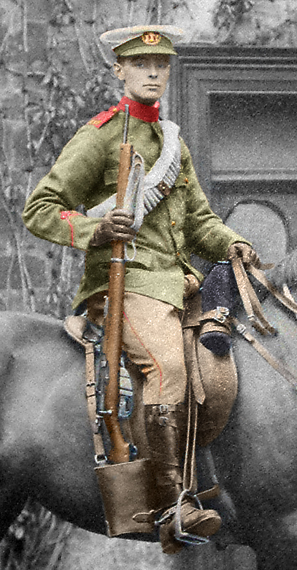 |
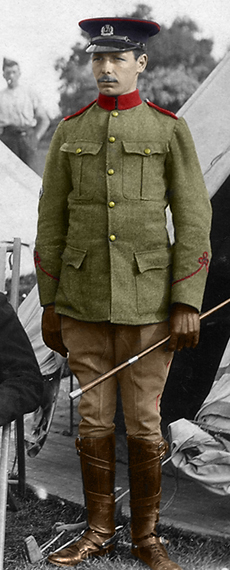 |
| Fig 1 |
Fig 2 |
Drill Order c1903
Jacket: Serge mixture with stand collar; the collar
shoulder straps and trefoil braiding on the sleeves are the
colour of the regiment's facings (scarlet); LIY in brass on the
shoulder strap. Brass buttons LIY encircled with "Prince
Albert's Own".
Breeches: Bedford Cord, with a narrow welting
of the same colour of the facings
on the outside seams.
Forage Cap: {Fig 1} Drab coloured soft felt hat with badge
(Pattern1). {Fig 2} This appears to be the full Army Blue forage cap.
Accoutrements: Brown leather gaiters, boots, hunting
spurs and tan gloves.
*** The colour of the uniform above has been added as a
representation only, this is not the true colour of the khaki,
red or Army blue.
South Africa 1900-02
Battle Dress
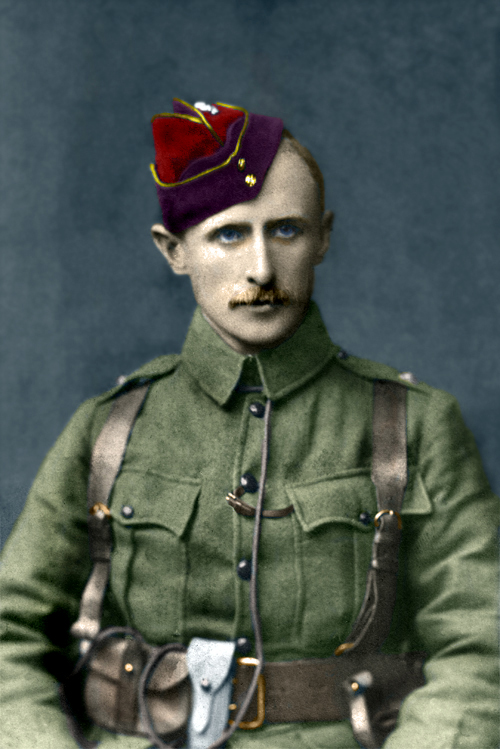
Lt. The Hon. P C
Evans-Freke pictured here in the uniform of the Imperial
Yeomanry, his folding Forage cap is the "Imperial Yeomanry" with
a small white metal badge of the Imperial Yeomanry (Prince of
Wales Feathers) with gilt coronet. It had a purple body and peak
with a red crown and gold piping and the buttons were gilt with
white metal POW feathers and gilt coronet. According to W Y Carman's book on Yeomanry
Headdress, the purple seems to have indicated the "Imperial
purple" of Rome and was kept by some new Yeomanry Regiments
(Westminster Dragoons and the Rough Rider's for example).
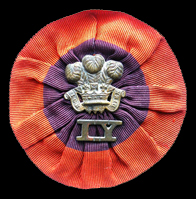 |
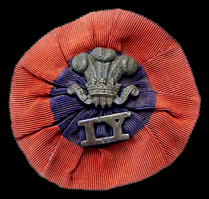 |
Standard Imperial Yeomanry
Rosettes
Showing maker variation in the Prince of Wales badge. |
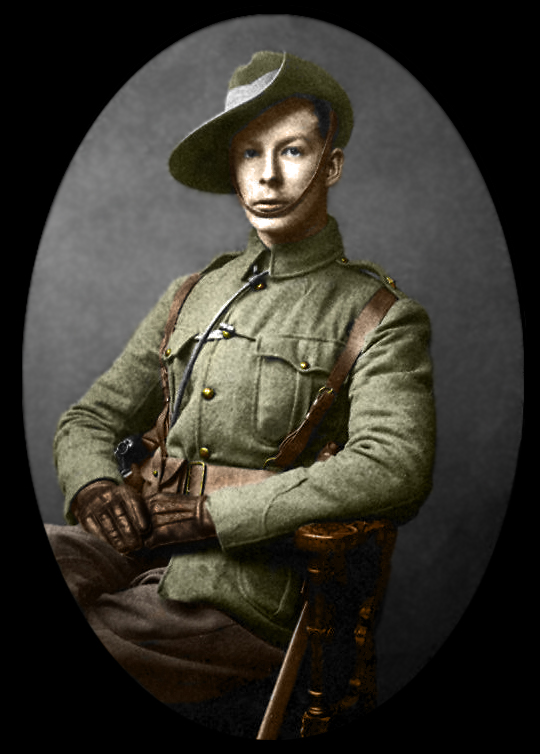
Lt. F W Martin in Imperial Yeomanry uniform 1900.
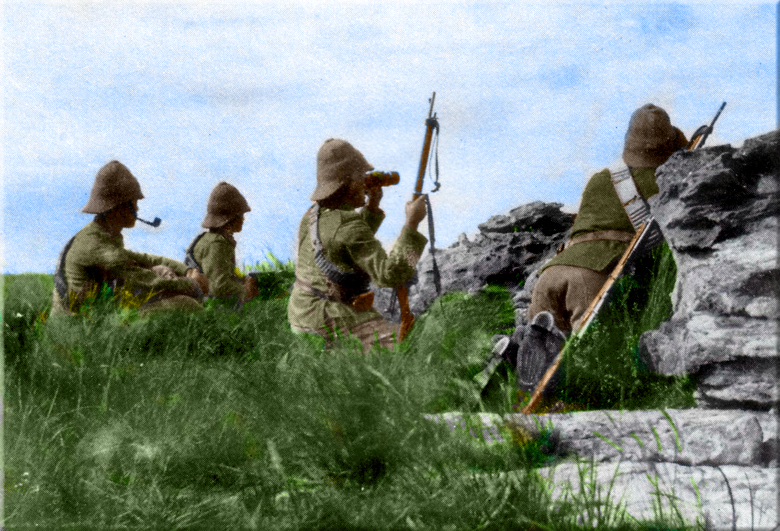
Lt. P C Evans-Freke (pipe) and SSM Ewart (binos) recce the
terrain from the "Tiger's Kloof", a highpoint between Bethlehem
and Harrismith, South Africa.
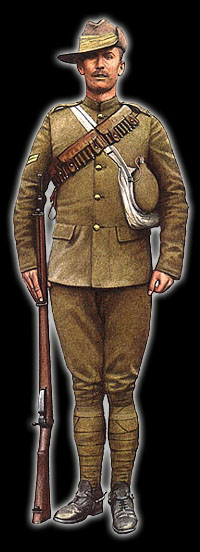 |
The slouch hat was worn in the 2nd Boer War by the Imperial
Yeomanry and also the Cavalry Pith Helmet, the elongated blunt
back shape proved efficient in protecting against being struck
on the back of the head. Made from "Cork Pith", covered in
cotton twill and a cotton turban, this hat was often "dunked" in
water, before wearing, to create an evaporation effect for
cooling the wearer.
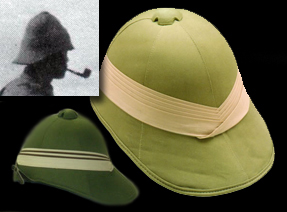
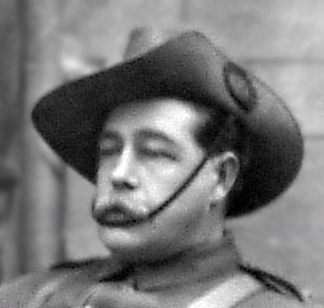 |
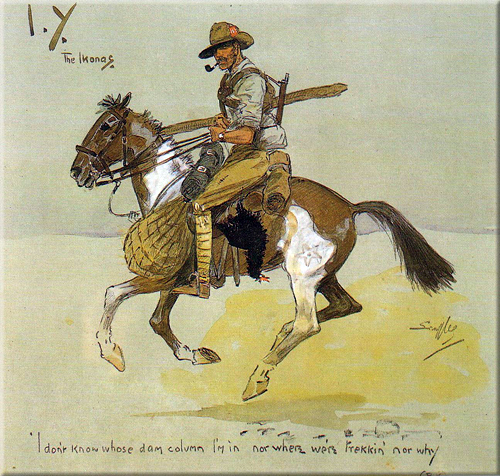
Caricature of Lt. P C Evans-Freke 7th Coy,
Imp. Yeo., riding across the veldt. Watercolour by Snaffles (C J
Payne 1884-1967).
|
|
|